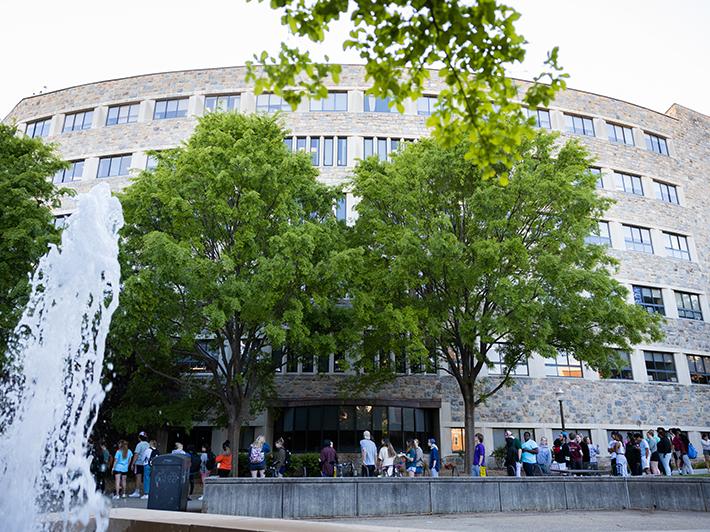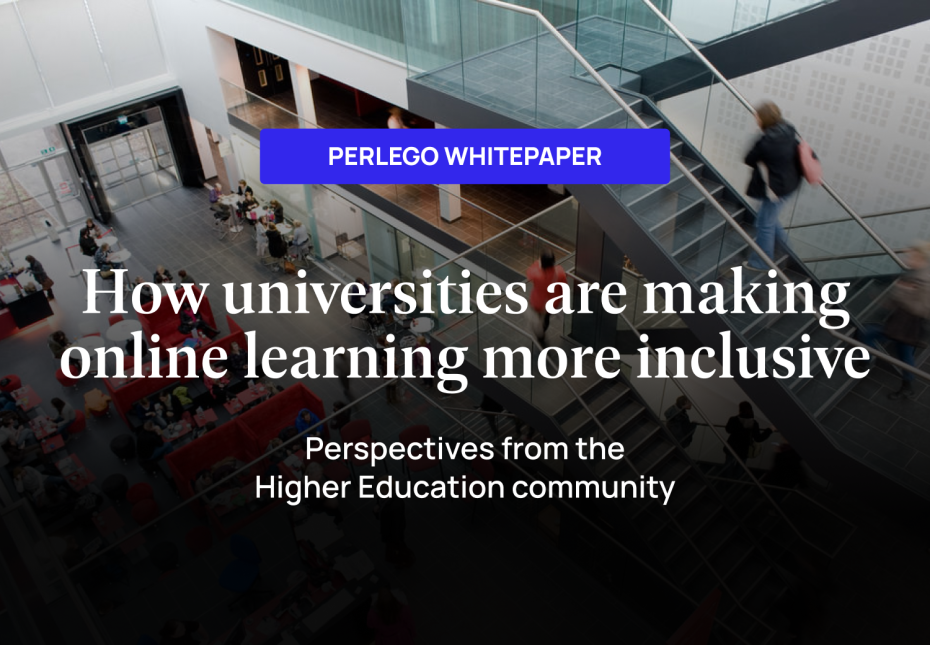To celebrate the diamond jubilee of our university’s Royal Charter in 2024, library staff suggested a heritage trail that showcased personal recollections about the period 1945 to 1975 from former staff and students. The reminiscences were recorded by the Scottish Oral History Centre and are held in the library’s archives and special collections.
We proposed a series of interactive displays, with each recording showcased next to a large, archive photograph at a relevant location around campus. This would include a transcript of the quote and a QR code that users could scan with their phones to hear the person speak. Seven of these would be branded as a jubilee heritage trail for people to follow.
- Integrating the university library into teaching and learning: why and how
- Information literacy is a core skill – and libraries are ideally placed to embed it
- Redesigning the university library for creating and collaborating
There was much that we could do within the library team for this project, but we did not know how to manufacture or install the interactive trail, and our library blog was not the most effective way to spread the word.
How did we transform a library-focused project into a campus-wide celebration that reached wider audiences?
1. Play to your strengths
As information professionals, our specialism is providing access to top quality resources. The archives team identified that the oral history project “The University Experience 1945-1975” provided fascinating social and cultural insights into life at the university for all manner of individuals: women, people of colour, cleaners, professors, students, support staff. We described the interviews on our catalogue and used our technical capabilities to host the audio recordings and transcripts online, so that users can listen to the voices of the past at the click of a button. We also hold a rich collection of historical photographs that are excellent windows onto life at the institution in bygone eras.
2. Know what you don’t know
We knew we had a brilliant resource to offer to researchers and the public, and that there would be an appetite for historical reminiscence during the jubilee year. What we didn’t know was how to create a physical trail that would be mounted within buildings around campus. We also didn’t know how to reach the widest audience to spread the word. We knew we needed help with these aspects and that we had to share the vision with colleagues around campus.
3. Take a seat at the table
To find support we had to make sure we were in the right place at the right time. When one of our archivists was invited to the jubilee delivery group, we jumped at the chance. As well as advising on all things heritage-related for the jubilee calendar, we made contact with the conferencing and events team, and could share the oral history trail project idea. Conferencing and events were vital in transforming the selected quotes and (rights-checked) photographs into a high-quality design and web strategy. They designed the artwork, arranged the manufacture and installation of the stops around campus, and created a webpage to host a virtual version of the tour.
4. Listen to feedback
Crucial to success was seeking feedback from stakeholders throughout. We had initially selected a quote reminiscing about music gigs, including a reference to Ozzy Osbourne for the students’ union installation. On showing the union the proposed artwork and quote, however, objections were raised due to allegations of domestic violence against the heavy metal singer. Checking that everyone was happy with the representations on the trail stops before they were installed ensured a positive launch.
5. Reflect
While this project was a success, it always pays to take the time to reflect on the lessons learned throughout the process. Our key take-aways were:
- Start early with preparation and infrastructure Advance planning is essential, especially for digitisation, cataloguing and copyright clearance. These foundational tasks take time, but are critical for quality and accessibility.
- Leverage strategic collaborations Seek out internal partners early to unlock funding, share expertise and ensure cross-departmental engagement.
- Be realistic about capacity Carefully assess staff time and expertise available. Avoid overambition by scoping projects to match resources and allowing contingency for unexpected delays.
- Track usage and engagement and embed feedback mechanisms Establish processes to capture usage statistics to demonstrate reach and inform future reporting. Plan for both formal and informal feedback collection to assess impact and inform future improvements.
- Consult stakeholders throughout The decision to remove the quote based on student union feedback was a valuable reminder of the importance of inclusive consultation and sensitivity to reputational concerns.
Ultimately it was a low-risk, low-cost project and it was exciting to see it come together in a truly collaborative way.
Arthur McIvor, co-author of The University Experience, 2004 (the publication resulting from the original oral history interviews), was impressed by the project:
“This is a wonderfully innovative oral history trail…Hearing these voices at strategic sitings around the campus engages students and visitors, including alumni, in critical reflections and conversations about the past and about the meaning of university study and life… [It] represents outreach and accessibility to historical heritage at its best.”
Rachael Jones is assistant archivist; Neal Buchanan is assistant director (scholarly research communications) and Carol Stewart is a senior library assistant in archives and special collections, all at the University of Strathclyde.
The university’s library team has been shortlisted in the Outstanding Library Team of the Year category in the THE Awards 2025. The full list of nominees can be found here. The winners will be announced at a ceremony on 13 November.
If you would like advice and insight from academics and university staff delivered direct to your inbox each week, sign up for the Campus newsletter.




comment